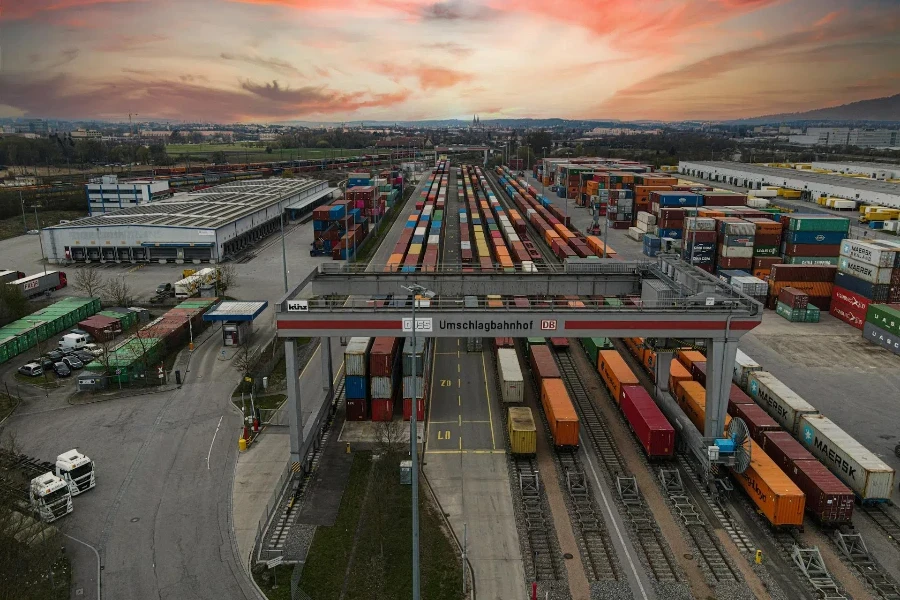Digitalization has brought significant transformations to many items that were once considered otherwise ordinary in our daily lives. For example, we’ve moved from mechanical wristwatches that required manual winding to today’s almost “all-in-one” smartwatches, equipped with fitness trackers, GPS, and even smartphone functions.
Similarly, in the supply chain field, digital evolution has made profound impacts. The Transportation Management System (TMS), which has been integral for around 50 years now, is experiencing a remarkable digital revolution that further reinforces its role as the “centralized hub” for supply chain management today. Read on to discover more about TMS, its advantages, the strategic considerations when selecting such a system, and how to choose the right TMS with all the must-have qualities to take note of.
Table of Contents
Understanding Transportation Management Systems (TMS)
The advantages of digital TMS
Strategic considerations and essential qualities of TMS
Optimal TMS for the digital era
Understanding Transportation Management Systems (TMS)

Covering all essential logistics aspects related to goods transit across various transportation modes, TMS refers to a type of powerful software that is designed to simplify transportation for shippers. Simultaneously, it helps ensure cost-effective, punctual deliveries through route planning, route optimization, shipment scheduling, and tracking.
While TMS can be particularly useful for shippers with large transportation volumes, it is also becoming more popular with smaller companies in view of all the essential functions of TMS that aid in lowering overall transportation costs and increasing efficiency in the entire freight management process. The popularity of TMS is demonstrated by a substantial double-digit compound annual growth rate (CAGR) of 11.32% over a 10-year forecast period between 2022 and 2032, with expectations to surpass $32 million by 2032.
Meanwhile, taking a closer look at the evolution of TMS since its inception in the early 1970s is helpful to gain a comprehensive understanding of its essential features throughout the digital transformation era. Over the years, It’s evident that significant updates have occurred almost every decade, with each milestone driven by advancements in digital technology.

The automation of TMS began around 40 years ago in the 1980s, with the development of Electronic Data Interchange (EDI) and early Enterprise Resource Planning (ERP) systems allowing for some automated transportation processes. The major turning point, however, came in the 1990s, with the introduction of the first dedicated TMS software, which integrated more sophisticated features such as route optimization and carrier management.
Entering the new millennium, TMS solutions were further enhanced by the advent of fleet management systems with GPS functions, cloud computing, and web Application Programming Interfaces (APIs), making more accurate, scalable, and integrated TMS solutions possible. The rise of ecommerce in the 2010s greatly elevated TMS solutions as they began to be capable of handling multi-carrier shipping requirements and more complex, time-sensitive logistics requests.
Fast forward to now in the 2020s, AI, machine learning, and blockchain technologies have been incorporated into TMS, significantly enhancing their capabilities and affecting the selection criteria when choosing them, which will be discussed in detail in our next section.
The advantages of digital TMS

The fundamental functions of TMS, which have been previously explored, are what make TMS capable of managing routes. The coordinated integration of these highly relevant and practical features, assisted by digital advancements over time, results in considerable advantages that improve the efficiency of the entire goods transportation process.
To begin with, the overall logistics process is streamlined with proper route planning and optimization, in addition to identifying the best routes and schedules using real-time data and advanced algorithms. This aids in enhancing delivery efficiency and speed, which in turn significantly reduces transportation costs as a whole, cutting down associated expenses such as fuel consumption and manpower hours.
Enhanced customer satisfaction is the ultimate anticipated outcome of the real-time tracking feature enabled by API and EDI connections from dispatch to delivery. Performance throughout the entire shipping process is tracked, allowing actions to be taken quickly to address any issues while also providing more accurate shipment delivery estimates.

Another benefit of real-time shipment tracking is that companies can obtain more comprehensive data for relevant data analytics. This allows for the creation of automated reporting features that help businesses analyze various usage and shipment trends, while also aiding in identifying areas for improvement.
At the same time, the automation provided by TMS in handling many traditionally manual tasks, such as freight billing and trade compliance documentation, further helps to reduce the risk of human error or potential issues, freeing up more valuable time for staff.
All in all, the combination of automation and robust analytic data capabilities—two of the most powerful features of TMS—greatly enhances the effectiveness of TMS by consolidating all vital data in freight transportation to generate insightful reports for making data-driven business decisions, including financial, operational, and customer service quality reports.
Strategic considerations and essential qualities of TMS
Strategic considerations for TMS

In reality, there are a variety of factors to consider when selecting a TMS that best suits the requirements of different businesses, depending on their specific needs. From a digital TMS perspective, however, there are two primary strategic concerns that all businesses, regardless of size, should pay extra attention to.
The first main strategic consideration is related to the potential integration of TMS with any other existing business systems a company has. For example, integration with ERP and Warehouse Management Systems (WMS) are the two most typical usage scenarios of TMS.
In other words, whichever TMS is chosen, at the very least it must be able to establish and maintain seamless communication with other business systems currently in place. In practice, this means that the selected TMS must be able to exchange data with another existing business operation system according to the interface technology that both systems use. Such constant interconnectedness is vital in facilitating smooth data flow to enable an all-encompassing view of the entire supply chain.

In the meantime, with globalization evolving into a norm instead of a trend, supply chain restructuring like outsourcing, nearshoring, reshoring, and offshoring are becoming increasingly prevalent. Yet in terms of transportation arrangements, such restructuring signifies huge adjustments, if not complete transformations, in any typical logistical process.
It is hence extremely important for businesses considering or anticipating such potential restructuring plans to choose a TMS system that is ready to accommodate these drastic changes. Although all of these tasks may be completed considerably more quickly and efficiently with digital TMS thanks to technological advancements, it is still crucial for any strategically-minded businesses to take the system’s capability to handle significant changes into account when evaluating a TMS.
Essential qualities of TMS

It’s crucial to distinguish between the core operational features of a TMS and the essential qualities businesses should seek when choosing one. In fact, whether it’s a basic or advanced model, most TMS solutions contain similar fundamental functions. These essential features allow businesses to plan and optimize shipments, as well as to schedule and track goods in real-time, which are all valuable for managing transportation up to the end customer level.
As such, it is important to identify the essential qualities in a TMS solution that can provide long-term value and have a lasting positive impact on the business rather than simply focusing on features. Versatile interfacing technology, for example, is one such critical quality that allows integration capabilities with other systems, such as ERP, supply chain management, Customer Relationship Management (CRM), and inventory management. This ensures the longevity and relevance of the TMS.

Meanwhile, in the increasingly complex global business landscape driven by globalization and AI advancements, consideration for a scalable and adaptable TMS is necessary to handle various changes involving suppliers, transportation modes, carriers, and regulations. Such flexibility and expandable solutions should be aided by AI-assisted decision-making for route planning and optimization, covering order scheduling and improved real-time visibility to enhance overall operational efficiency.
The prevalence of AI and machine learning in TMS nowadays also signifies the rise of predictive analytics and reporting, a much-welcomed advancement in TMS development. These technologies support disruption forecasts and informed decision-making with advanced reporting features. Predictive analytics enable users to forecast estimated time of arrival (ETAs), anticipate delays, and proceed to work out alternatives to improve service quality and reduce costs at the same time.
Finally, a future-proof TMS should be able to continuously “learn” and update to support ongoing improvements based on market conditions, competition, and technological advancements. Making full use of cloud-based computing and machine learning, a TMS can then provide regular updates and product releases to handle transportation effectively. This quality is what ensures the TMS solution evolves with changing needs and advancements.
Optimal TMS for the digital era

An optimal TMS solution in this digital era is a type of valuable software for shippers to simplify their day-to-day shipping requirements. TMS helps businesses streamline logistics processes, enhance customer satisfaction, and leverage automation and data analytics to optimize transportation management, demonstrating its effectiveness in transportation management through all its advanced features.
When choosing a TMS, the ability to integrate with other business systems, scalability, adaptability to support significant shifts in supply chain restructuring, predictive analytics supported by AI and machine learning, and continuous updates and improvements are essential qualities.
For logistics insights, creative wholesale business ideas, and comprehensive sourcing guidelines, explore Alibaba.com Reads regularly.

Looking for a logistics solution with competitive pricing, full visibility, and readily accessible customer support? Check out the Alibaba.com Logistics Marketplace today.




